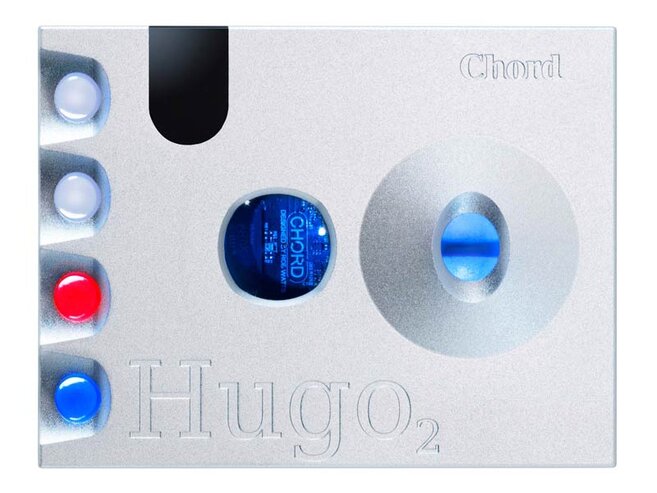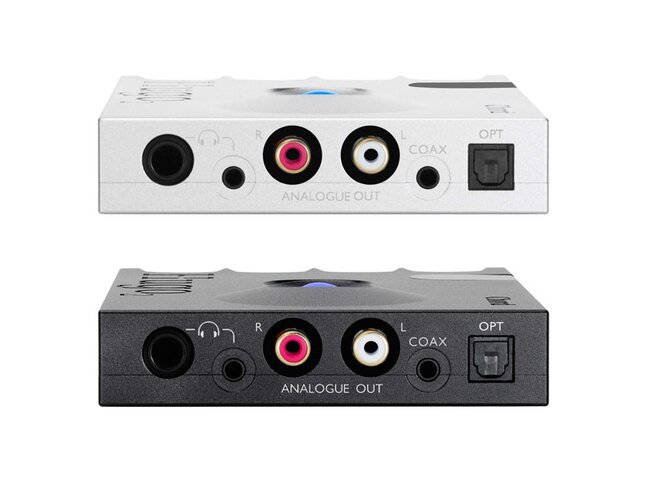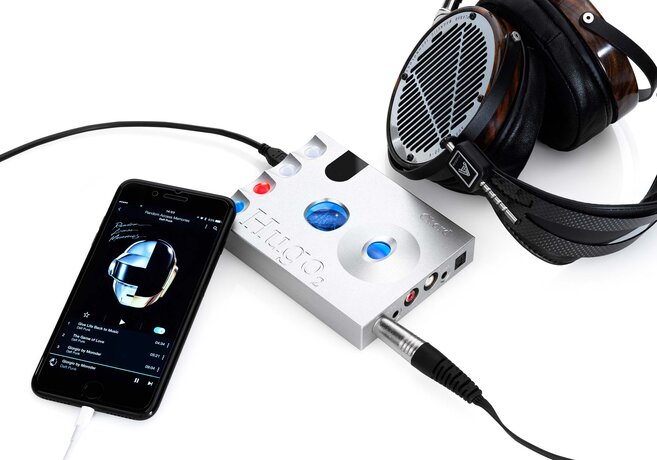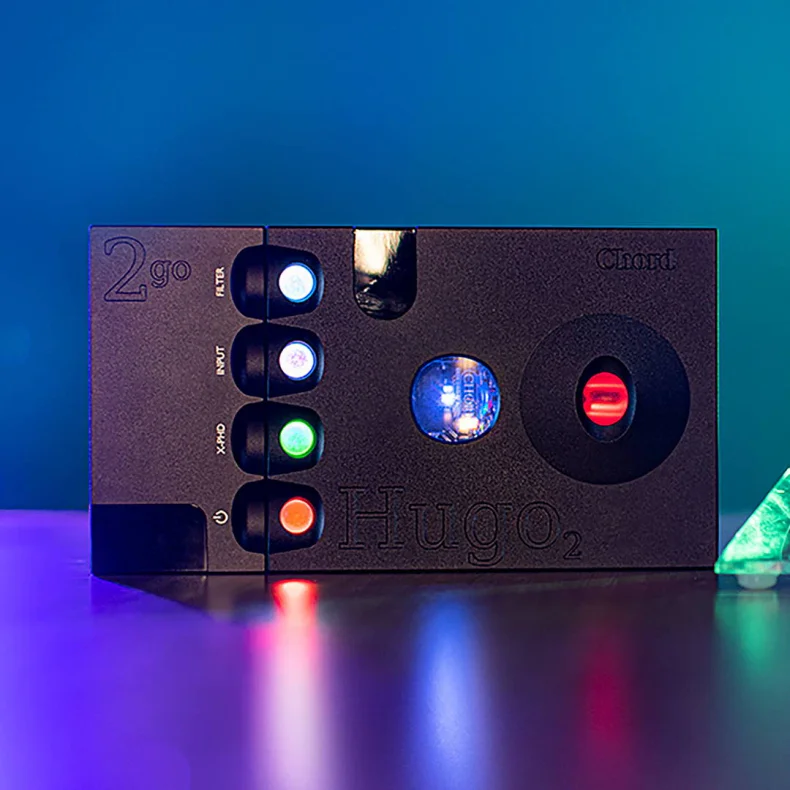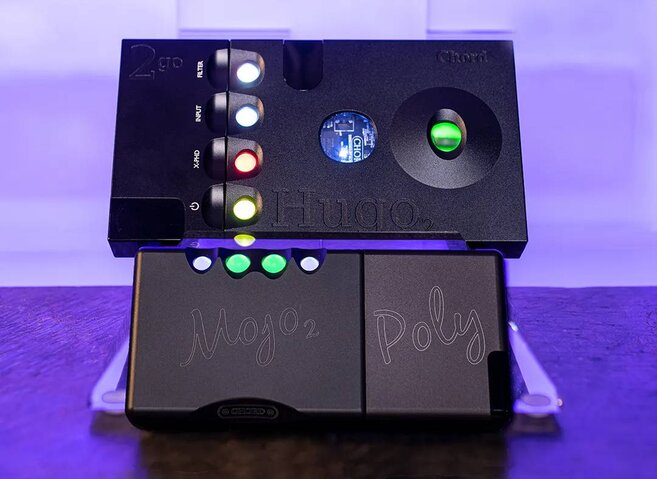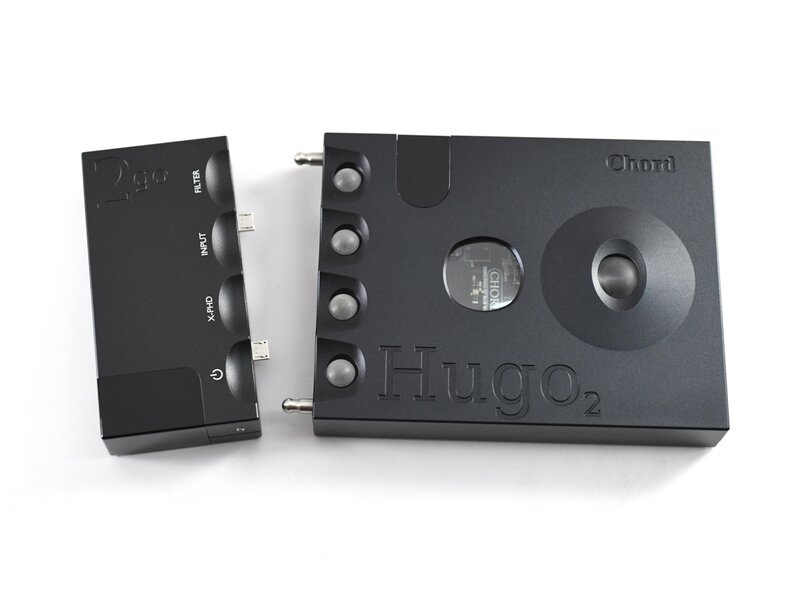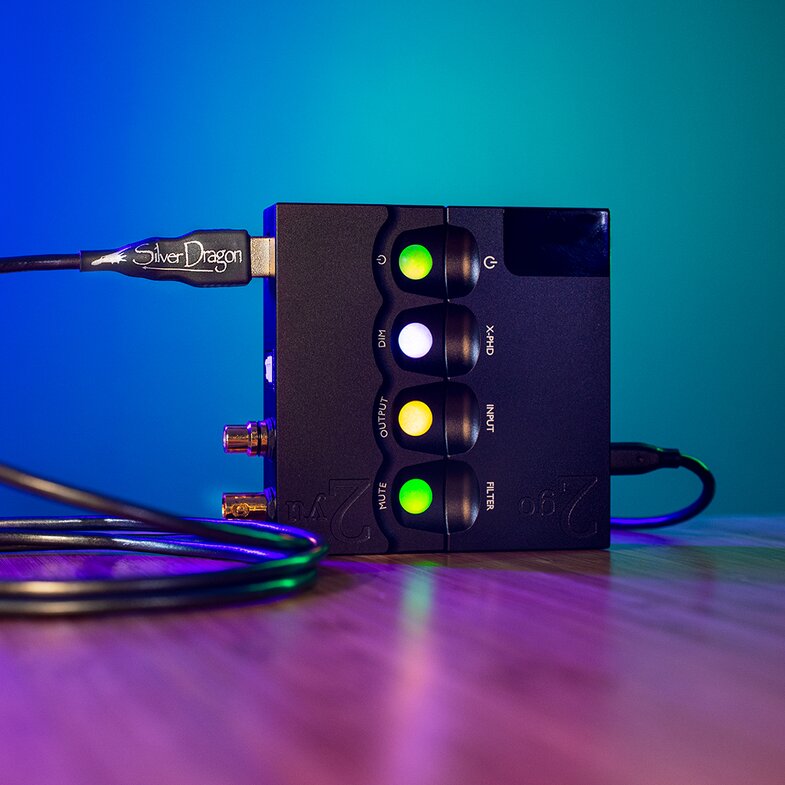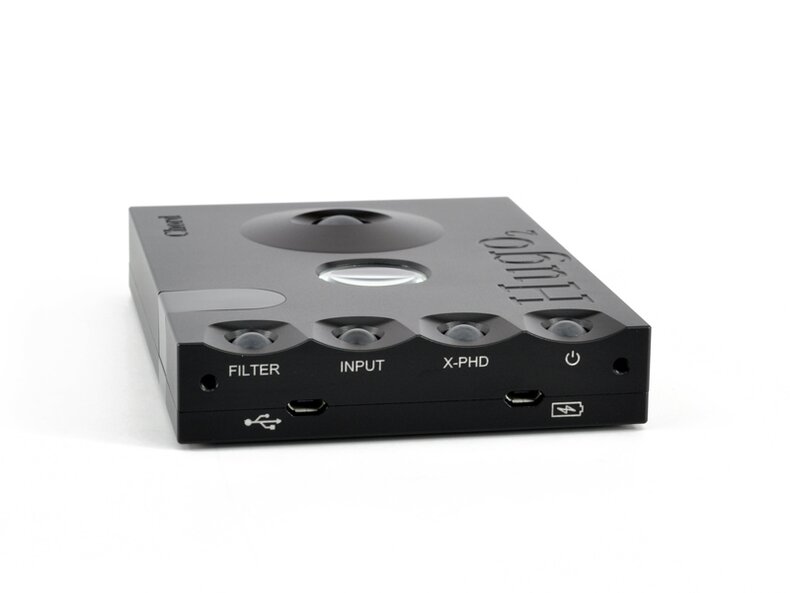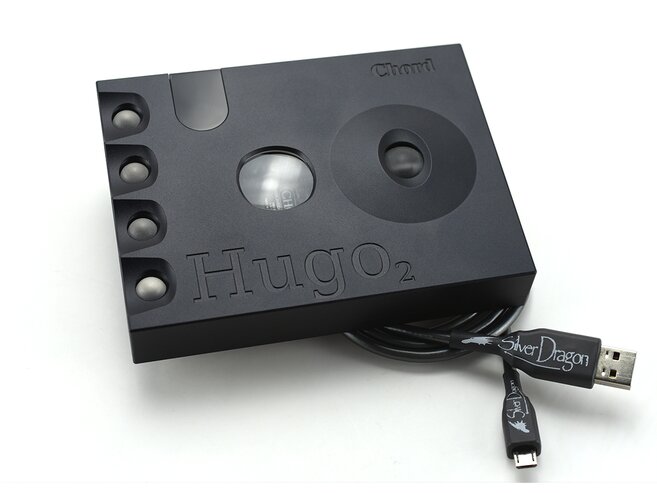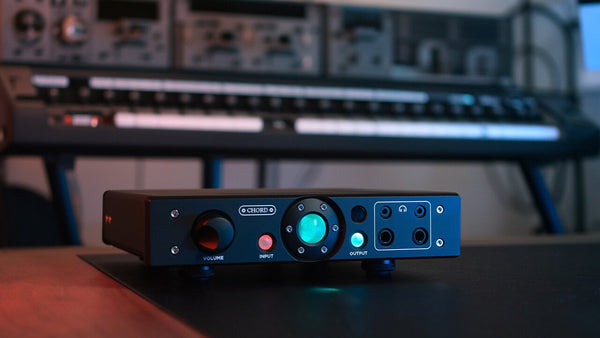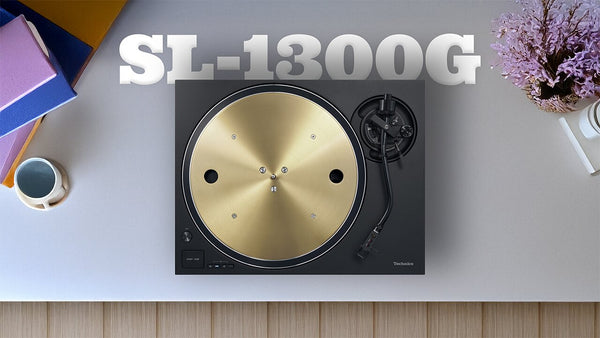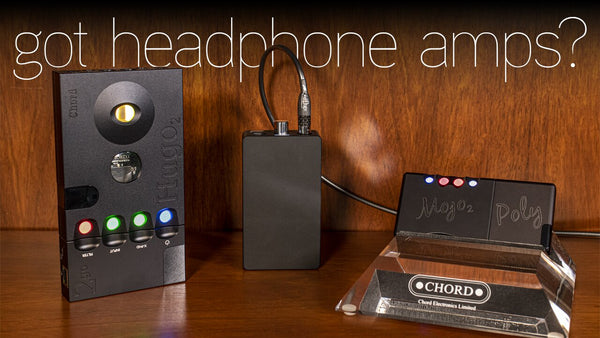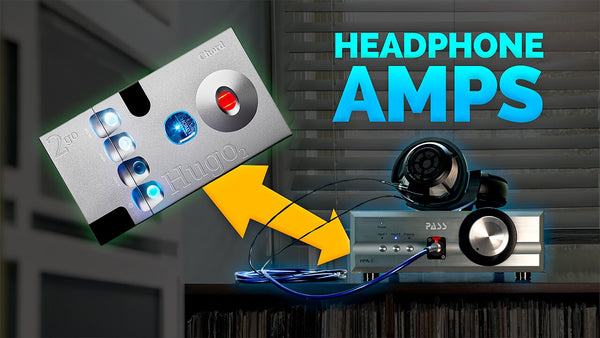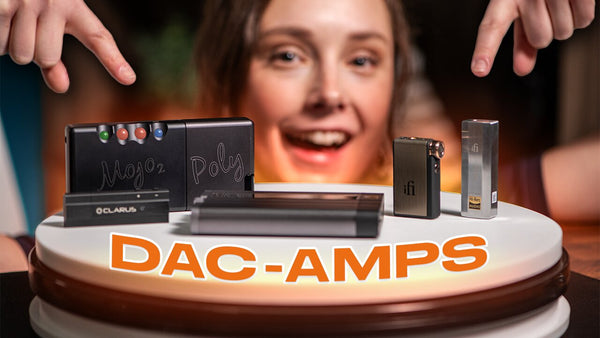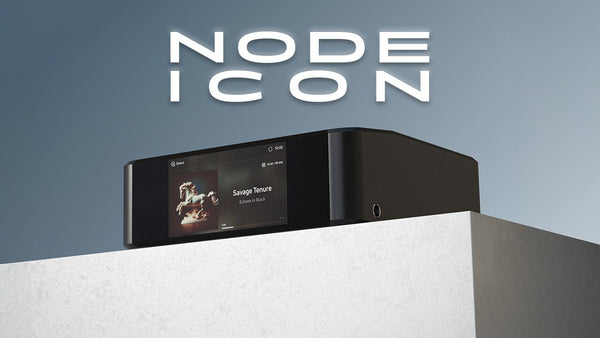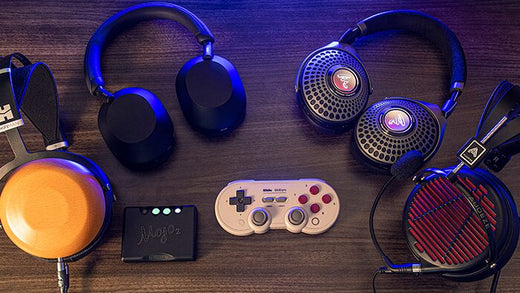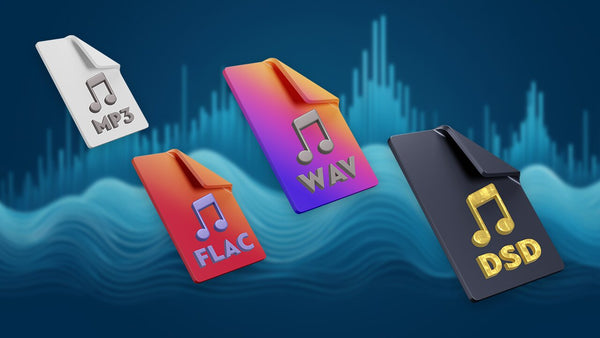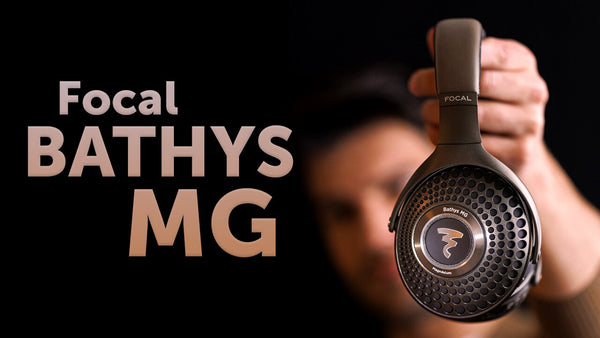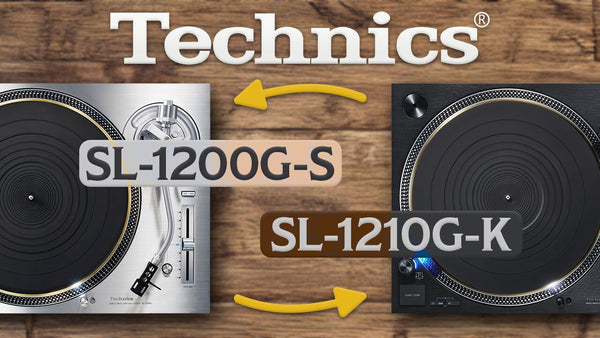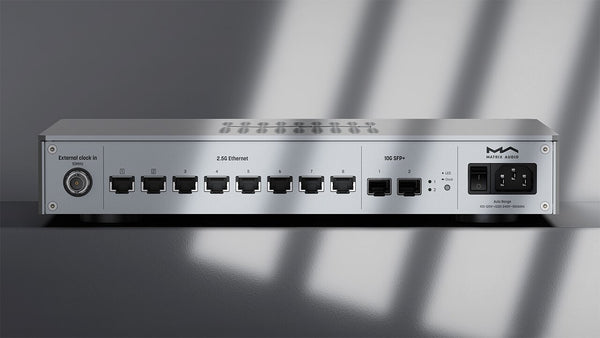Chord Electronics Hugo 2 DAC Amp Review

The Best Portable Sound Has to Offer?
2014 was a pivotal year for Chord Electronics. The release of the first-generation Hugo helped put Chord on the map since it was one of the best-received and best-sounding portable DAC amps on the market. Three years later Chord released an even better product that is still one of the pillars of the best portable sound today, the Hugo 2. Yes, we know it’s been over 5 years since the Hugo 2 was first introduced, but the fact that it’s still a great-selling portable DAC amp even today made us want to revisit one of our favorites here at Moon Audio. Just what is it about the Hugo 2 that makes it sound so good? Why is it still so popular today? Let’s try to answer some of these questions as we take a further look at the renowned Hugo 2 Portable DAC Amplifier from Chord Electronics.
Chord Hugo 2 Review: Details, Features & Specifications

PROS
- Awesome Chord Detail and Clarity
- Feature-Packed
- 2GO pairing adds more features and streaming functionality
CONS
- Pricey
- You either love or hate spherical controls
Design
The Hugo 2 fits right in that sweet spot of being small enough to be able to take with you but still powerful enough that it will seem right at home in a desktop setup as well. The chassis is made from aircraft-grade aluminum, giving it great strength and durability, and comes in both a silver and back color variation. The silver version has a nice silver sheen to it, giving it a premium feel. Let’s be honest, it’s Chord Electronics, so it’s built like a tank and everything that goes into the production of making the Hugo 2 is top-quality components and craftsmanship. You’ll see that Chord shows off their colored-ball control design, which is functional enough in this format, giving you control over the filter select, input select, crossfeed settings, and power. On the top of the unit is where you’ll find the volume control wheel, which rolls up or down depending on how you adjust the volume.
Inputs and outputs (I/O) on the Hugo 2 are excellent. Inputs consist of an optical Toslink (24-bit/192kHz capable), an RCA coax input (24-bit/384kHz capable), and an HD USB input (32-bit/768kHz and DSD512 capable). Bluetooth is also included as an input option via the aptX codec. Outputs on the Hugo 2 include a 3.5, headphone jack (unbalanced), a 6.35mm headphone output (unbalanced), and a pair of stereo RCA phono outputs.
Again, the quality of the DAC is unmistakable. It’s a solid construction with a great selection of I/O for both portable and desktop usage scenarios. Chord has also developed an add-on to the Hugo 2, the 2GO, that connects directly to the Hugo 2 via dual micro-USB connections. When connected, the two devices are practically integrated seamlessly, making for a complete high-resolution music streaming system. We’ll talk more about the 2GO later in the review, but Chord always gets an A+ in our book for design and product integration. The DAC is still small enough to be palmable, and with the included internal battery, you’re looking at around 7 hours of battery life for music playback. It’s a capable hi-fi device that we’d argue, at least here at Moon Audio, has hardly been topped yet when it comes to superb portable audio quality.
Sound
We’ve already said it numerous times before, the Chord Hugo 2 is some of the best portable sound you can get. Let’s take a look at why that is.
First off, the big upgrade from the original Hugo is that the tap-length has now been doubled to 49,152 and ups the 4-element Pulse Array design to 10-elements. The previous Hugo only had 26,368 taps, and although we’re not going to get into here in this review, many will argue that on a fundamental level, more taps mean better sound quality. The other element to the equation is Rob Watt’s engineering and the upsampling filters that affect the quality of the audio playback. Like many of Chord’s products, the Hugo 2 DAC signature leans to the analytical side, providing an astounding amount of detail in clarity in the sound reproduction. The tight and accurate bass response is impressive, though in all honesty, it might be a bit on the light side for bass heads and people looking for some major slam. Mids are well articulated and the resolution and dynamics across the board stand out well among the competition.
As mentioned in the previous section, the Hugo 2 has a great selection of inputs and outputs, and depending on how you are connecting the DAC to your system, will determine the resolution of your audio playback.
- 1x Optical TOSLink 24-bit/192kHz-capable
- 1x RCA coaxial input 24-bit/384kHz-capable
- 1x HD USB input 32-bit/768kHz and DSD512-capable
It says a lot to me when I plug in a piece of gear and I'm already hearing new things in songs I've listened to literally thousands of times before. You can see the test songs below, but I was pinpointing new bits in the first playthrough. The Hugo 2 is an absolutely detail beast machine. That being said, some people get the impression that when something is analytical that it's devoid of low-end - and that's simply not the case. Your bass response will be more so affected by your set of headphones, but the Chord Hugo 2 does a great job of outputting some accurate low-end with excellent extension. Those hyper-details extend to all frequencies - from the crispness of the hi-hat and crashes to the intonation of the plucking or slapping on the bass guitar strings. Feel the difference between a 20" and a 22" kick drum - the details of your music extend to all ranges - and that's a great thing.
When it comes to comparing the Hugo 2 to the original Hugo, to make it simple, there are huge improvements in dynamic range, overall power, noise reduction, and timing accuracy. You can watch Drew Baird, P.E. talk more about these differences and improvements in his video below.
The filters and crossfeed settings are effective, so spend some time finding the one that sounds right to you. Crossfeed is a nice feature that is included, and it's been so popular that Chord has even included it on their newer and smaller Chord Mojo 2. I'm of the opinion that it's nice to have options, even if you don't end up using them that much, which was my case for the crossfeed settings. It's hard to get better sound from a device as portable as the Hugo 2. Even after 5 years now since its release, the Hugo 2 is still one of the best options on the market for those wanting a DAC amp that can easily go with you and hang with the big desktop boys at the same time. You have to hear it to believe it.
Features
There are a number of high-end features that makes the Hugo 2 a capable and portable DAC amp with a few tricks up its sleeve.
Filters
The Hugo 2 offers 4 different filtering options. Filters allow you to shape the frequency curve to tailor the sound based on your listening preferences. Keep in mind that these are not major EQ changes to the sound, rather, they are micro-shaping the curve to affect roll-off and attack. They're subtle, yet effective changes that can make a difference in how low and high frequencies in particular are perceived (depending on the type of music you are listening to).
Filters - Offering user-selectable frequency-shaping
- Hugo (Ultimate Reference) (White)
- Hugo HF+ (High Frequency roll off) (Green)
- Mojo (‘Smooth’) (Orange)
- Mojo HF+ (High Frequency roll off) (Red)
Crossfeed
Chord implements Crossfeed settings as well into the Hugo, allowing the user to have a speaker-like performance when listening to music. The effect can be adjusted based on the amount of crossfeed you want in each driver, simulating the amount of space between speakers and the relative imaging.
Crossfeed - The system duplicates the effects of listening to speakers
- Level I - Light
- Level 2 - Medium
- Level 3 - Heavy
Input Select
The Hugo 2 has a great selection of I/O, giving the user a number of ways to connect to listen to their music. You can select from four digital inputs: optical, coaxial, HD USB, and extended-range Bluetooth. For analog outputs, the Hugo 2 has two RCA (L&R), 3.5mm, and 6.35mm headphone out, giving you the option to plug it into just about anything. The even better part of this is that Chord has developed an additional product that plugs right into the Hugo 2, giving you even more features like streaming. We'll introduce you to the Chord 2GO now.
The Chord Electronics 2GO
The 2Go is a neat little device that easily makes the Hugo 2 into one of the best-sounding all-in-one portable streaming devices. The 2Go connects seamlessly to the Hugo 2 DAC amp, allowing it to stream directly from a high-resolution source via Wi-Fi. For the best audio quality, you can also connect the 2Go to your network via the ethernet jack, making it a great solution for wireless streaming either on the go or in your home desktop system. That being said, the 2GO offers a lot more than just great streaming. One of my favorite features is the dual microSD slots, which basically means today you can plug in 2TB worth of high-resolution audio files and use the 2GO as a network streamer. It adds a ton of additional features to an already versatile device, so in my book, the 2GO is a perfect match with the Hugo 2 (much like the popular Mojo and Poly duo). It'd be hard to have one without the other.
About the 2GO
The 2go is a high-performance streamer/server that transforms the Hugo 2 into a full-featured Wi-Fi- and Ethernet-enabled device. In addition to its music streaming abilities, because 2go has up to 4 TB of SD card music storage it also functions as a high-capacity digital music server (using MPD). When being powered from its battery alone the Hugo/2go delivers the ultimate in purist audio. The 2go contains highly advanced miniaturized electronic engineering and is the most technically and sonically advanced compact music streamer available today.
Wireless convenience (2.4GHz Wi-Fi and A2DP Bluetooth) combine with the stability and performance of wired (Gigabit) Ethernet connectivity, the latter offering set-up-free plug-and-play operation. 2go also benefits from comprehensive audio interfacing and offers Tidal, Qobuz, and Internet radio playback with Spotify (and others) earmarked for the future. 2go is also Roon Ready, offers gapless audio and DoP/Bit Perfect support, as well as being fully DLNA-compliant (server/renderer) and AirPlay-ready.
A key feature of 2go is its auto-switching input function: every audio interface is always on, therefore switching between inputs is as easy as hitting ‘play’ on the chosen control point app; 2go conveniently switches between all its inputs automatically, giving a seamless user experience when playing music from different sources or even streaming services.
Compatibility: In order for 2go to perform as a fully functional streamer, a connection with Hugo 2 (DAC/Preamp/Headphone amp) or 2yu is required.
Wireless Connectivity: Long-range 2.4GHz WiFi allows 2go to connect to an existing 2.4GHz WiFi network. Hotspot mode (activated within the Gofigure app), allows 2go to broadcast its own WiFi network with SSID and password in the eventuality that the device cannot connect to a static network. 2go can also be connected via Bluetooth 4.1 A2Dp.
Hugo 2 Connections
Dragon Cables
[Silver Dragon USB Cable, Black Dragon USB Cable]
The Chord Hugo 2 and Dragon Cables go together like peanut butter and jelly. Now that the Chord Mojo isn’t the only portable high-fidelity digital to analog converter (DAC) and headphones amplifier buyers and listeners will be glad to know the Chord Hugo 2 adds new depth, soundstage, and intimacy to music via iPhones, iPads, or Android smartphones and tablets. Apple iPhones and iPads will need a camera adapter (CCK) via USB since Chord Electronics continues to balk at paying Apple licensing fees.
We recommend our Apple CCK + Silver Dragon USB for customers who love precision and detail when listening to their music and Apple CCK + Black Dragon for music lovers who look for more warmth and better lower and mid-tones in their portable DAC listening experience.
Android phones and pads can connect directly to the new Chord Hugo 2. We recommend Silver Dragon USB for Android smartphone listeners who look for precision and detail and Black Dragon USB for those seeking warmth and robust low to mid-tones.
Our HiFi Audio Dragon Cables bring out more of what you love in your music and audio gear. If you love your headphones but wish they had a bit more top-end sparkle - a Silver Dragon Headphone Cable would be a great option. If your USB cables keep dying - as many stock cables do - then check out our quality USB Audio Cables. We say time and time again that materials matter, and our audio cables and custom geometries actually help to bring out those desired properties in your gear and music. We make tons of custom options for our customers so that you can get the right HiFi Audio cable for your exact needs. If you have any questions feel free to Contact Us and we'll be more than happy to help.
Verdict
Hearing is believing. Even after 5 years on the market the Hugo 2 still manages to impress. It's a substantial upgrade from the original Hugo in both sound and internal components. The Hugo 2 doesn't depart much from the Chord house sound, being analytical and detailed, and it has some of the best dynamic range I've heard in a small package. Don't let the size fool you either, the Hugo 2 can pull its weight even in larger desktop setups too, offering a great selection of inputs and outputs to fit in almost any audio system (headphones, IEMs, and desktop setups). Pair the Hugo 2 with one of our Dragon Audio Cables like the Black Dragon USB Cable or Silver Dragon USB Cable, to integrate it into an existing desktop audio setup. For the price, the Hugo 2 is a well-equipped DAC/Amp combo capable of delivering a premium hi-fi sound quality. Whether you decide to use this unit on the go or at your desktop setup, you'll be satisfied with the features, functionality, and sound quality of the Hugo 2 DAC/Amp.
Featured Products
Related Videos
Chord Electronics Hugo 2- The Legend Remastered
Chord Hugo 2 & 2GO: Need to Know
Top 5 Desktop DACs of 2023
What's in the Box
Specifications
Materials
Clamshell precision machined aluminum casing with polycarbonate buttons, acrylic signal window, and glass viewing portal. Available in a choice of two colours – natural silver, and satin black
Battery
2x Rechargeable custom Enix Energies 3.7v 9.6Wh Li-ion (lithium-ion (2600mAh) batteries*
Tap length filter
49,152 – 10 element Pulse Array design
Play time
In excess of seven (7) hours
Charging
Nominal four (4) hours via Micro USB at 1.8amps (fast charge) – Nominal eight (8) hours at 1amp (slow charge)
Connectivity (input)
Micro USB (White): 44.1kHz – 768kHz – 16bit – 32bit
Coax via 3.5mm Jack (Red): 44.1kHz – 768kHz – 16bit – 32bit
Optical (Green): 44.1kHz – 192kHz – 16bit – 24bit
Connectivity (input wireless)
Bluetooth (Bluetooth 2.1 +EDR with APTX) (Blue): 44.1kHz – 48kHz – 16bit
Connectivity (output)
1x ¼” jack headphone output
1x 3.5mm jack headphone output
1x stereo (L & R) RCA output
PCM support
44.1kHz, 48kHz, 88.2kHz, 96kHz, 176.4kHz, 192kHz, 358.8kHz, 384kHz, 717.6kHz, and 768kHz.
DSD support
Native playback supported. DSD64 (Single) to DSD512 (Octa-DSD)
Volume control
Digital, activated in 1dB increments. Last known state saved upon shutdown, with exception of line-level mode
Line-level mode
Activated via dual press of middle ‘Source’ and ‘Crossfeed’ buttons. Line level = 3v via all outputs. Reset by power cycle
Power saving mode
Auto-shutdown after ten minutes of input inactivity
Driver support
Driverless with Mac OS X and Linux, driver required for Windows OS
Chipset
Chord Electronics custom coded Xilinx Artix 7 (XC7A15T) FPGA
Tap-length
49,152
Pulse array
10 element pulse array design
Frequency response
20Hz – 20kHz +/- 0.2dB
Output stage
Class A
Output impedance
0.025Ω
THD
<0.0001% 1kHz 3v RMS 300Ω
THD and noise at 3v RMS
120dB at 1kHz 300ohms ‘A’ wighted (reference 5.3v)
Noise 2.6 uV ‘A’ weighted
No measurable noise floor modulation
Signal to noise ratio
126dB ‘A’ Weighted
Channel separation
135dB at 1kHz 300Ω
Power output @ 1kHz 1% THD
94mW 300Ω
740mW 33Ω
1050mW 8Ω
Weight
450g
Dimensions
130mm (L) x 100mm (W) x 21mm (H)
Boxed Dimensions
220mm (L) x 122mm (W) x 85mm (H)




